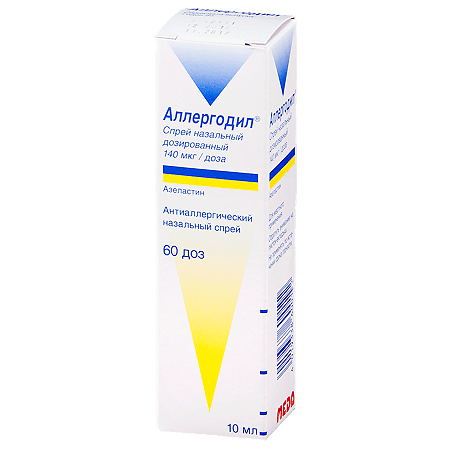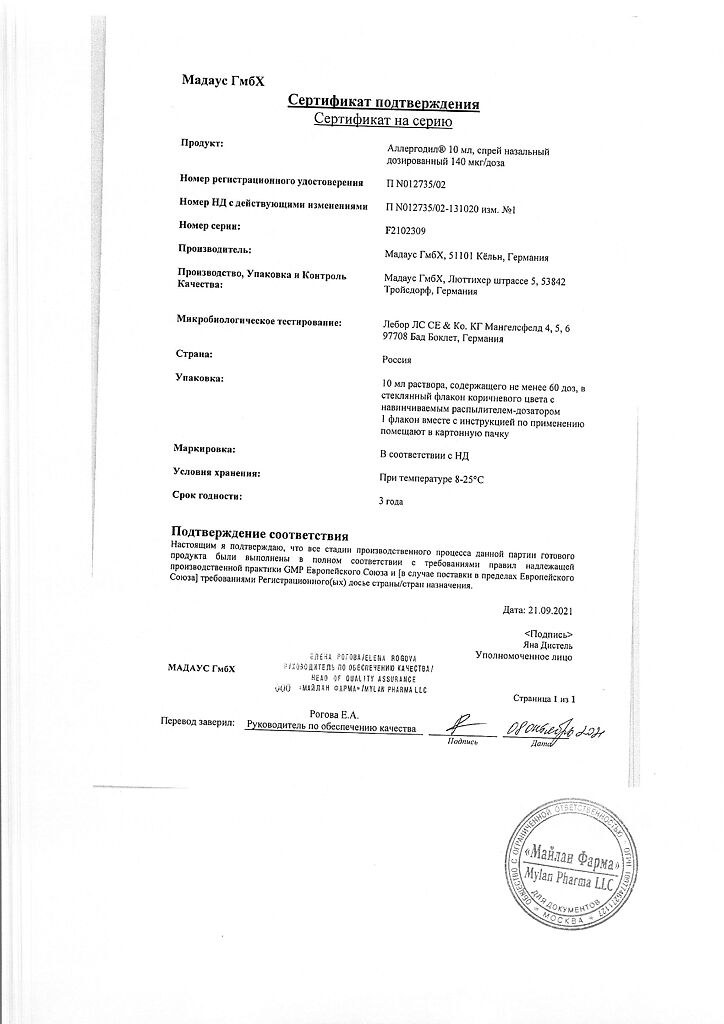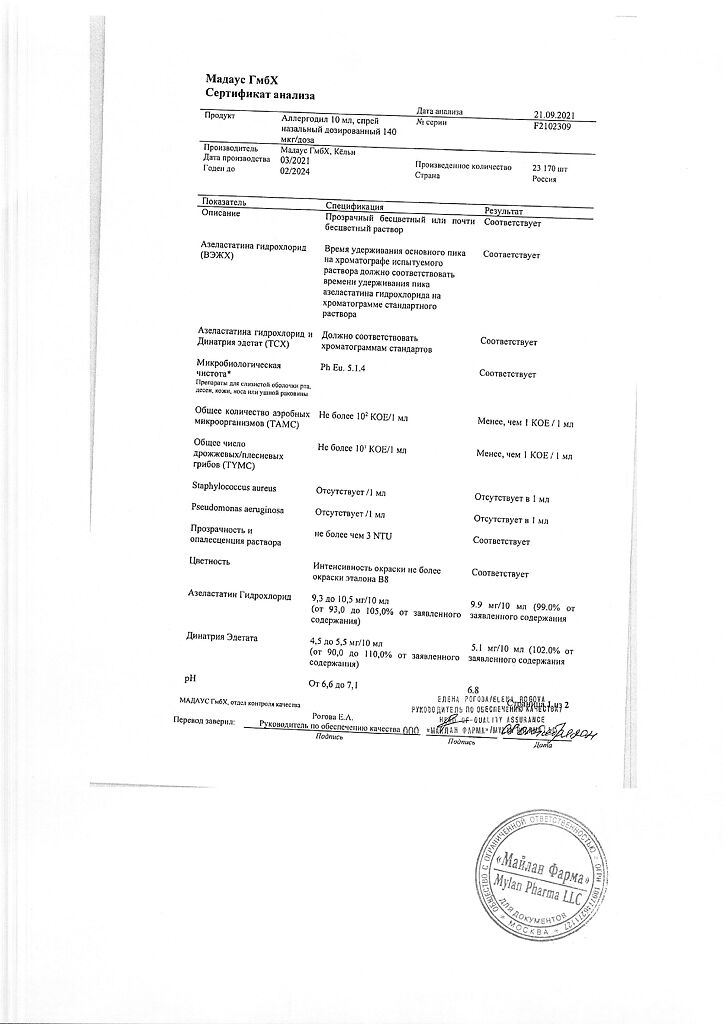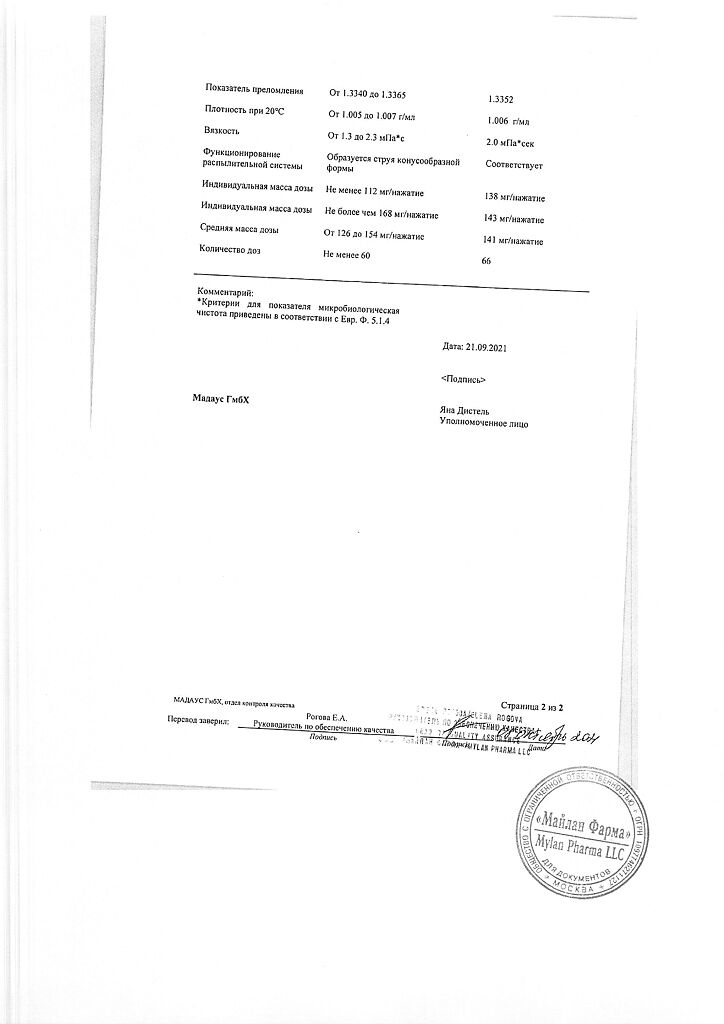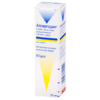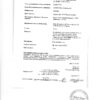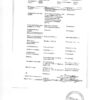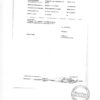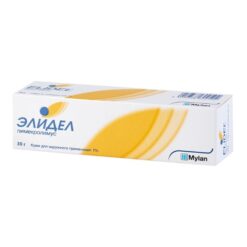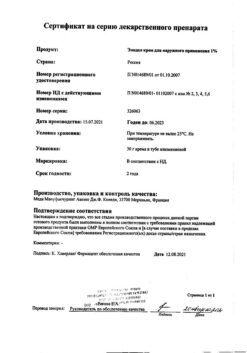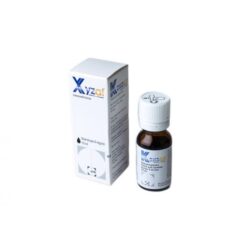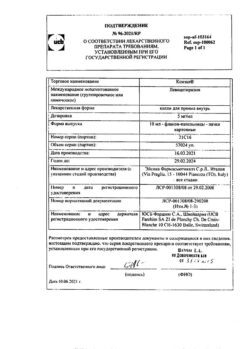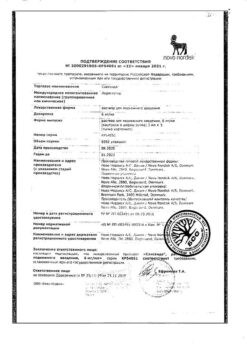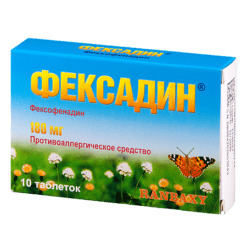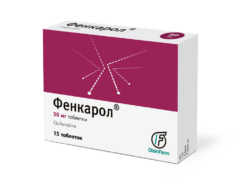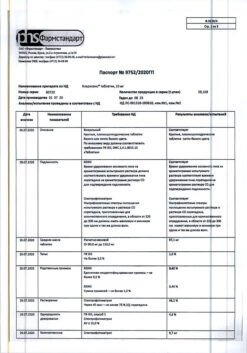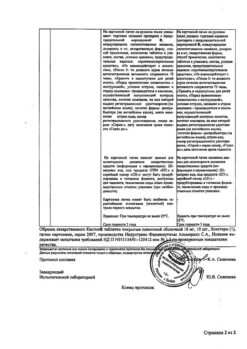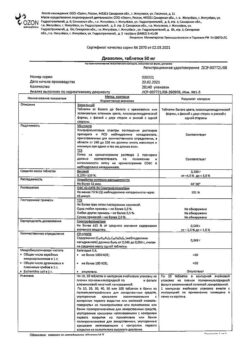No products in the cart.
Description
Pharmacotherapeutic group: anti-allergic agent – H1 histamine receptor blocker.
Pharmacological action:
Aselastin, a derivative of phthalazinone, is a long-acting anti-allergic agent. Being a selective H1-histamine blocker, it has antihistamine, antiallergic and membrane stabilizing effect, decreases capillary permeability and exudation, stabilizes mast cell membranes and prevents release of bioactive substances (histamine, serotonin, leukotrienes, platelet-activating factor etc.), which cause bronchospasm and contribute to early and late stages of allergic reactions and inflammation. When used topically, the systemic effect is insignificant.
When administered intranasally it reduces itching and nasal congestion, sneezing and rhinorrhea. Relief of symptoms of allergic rhinitis is noted from 15 minutes after application and lasts up to 12 hours and more.
There is no clinically significant effect on the QT (QTc) interval, even with long-term use of high doses of azelastine.
Pharmacokinetics:
Bioavailability after intranasal administration is about 40%.
The maximum concentration (Cmax) in blood after intranasal administration is reached after 2-3 hours. When administered intranasally at a daily dose of 0.56 mg of azelastine hydrochloride (one injection into each nasal passage twice daily), the average equilibrium plasma concentration of azelastine hydrochloride 2 hours after administration is 0.65 ng/ml.
Doubling the total daily dose to 1.12 mg (two injections into each nasal passage twice daily) results in a sustained mean plasma concentration of azelastine equal to 1.09 ng/ml.
However, despite relatively high absorption in patients, systemic exposure after intranasal administration is approximately 8 times lower than after an oral daily dose of 4.4 mg of azelastine hydrochloride, which is the therapeutic oral dose for the treatment of allergic rhinitis.
Intranasal administration in patients with allergic rhinitis causes increased plasma levels of azelastine compared to healthy subjects.
Other pharmacokinetic data have been studied with oral administration.
Binding to blood proteins is 80-90%.
Metabolized in the liver by oxidation involving the cytochrome P450 system to form the active metabolite desmethylazelastine. It is excreted mainly by the kidneys as inactive metabolites.
The elimination half-life (T1/2) of azelastine is about 20 hours, its active metabolite desmethylazelastine about 45 hours.
Indications
Indications
– Treatment of seasonal and year-round allergic rhinitis (including hay fever) and rhinoconjunctivitis.
– Treatment of symptoms of vasomotor (year-round non-allergic) rhinitis, such as nasal congestion, rhinorrhea, sneezing, postnasal drip.
Pharmacological effect
Pharmacological effect
Pharmacotherapeutic group: antiallergic agent – H1 histamine receptor blocker.
ATX code R01AC03
Pharmacological action
Azelastine, a phthalazinone derivative, is a long-acting antiallergic drug. Being a selective H1-histamine blocker, it has an antihistamine, antiallergic and membrane-stabilizing effect, reduces capillary permeability and exudation, stabilizes mast cell membranes and prevents the release of biologically active substances from them (histamine, serotonin, leukotrienes, platelet-activating factor, etc.), causing bronchospasm and contributing to the development of early and late stages of allergic reactions and inflammation. When applied topically, the systemic effect is insignificant.
When administered intranasally, it reduces itching and nasal congestion, sneezing and rhinorrhea. Relief of symptoms of allergic rhinitis is observed starting 15 minutes after use and lasts up to 12 hours or more.
There is no clinically significant effect on the QTc interval even with long-term use of high doses of azelastine.
Pharmacokinetics
Bioavailability after intranasal administration is about 40%.
The maximum concentration (Cmax) in the blood after intranasal administration is achieved after 2-3 hours. When administered intranasally at a daily dose of 0.56 mg of azelastine hydrochloride (one injection into each nasal passage twice a day), the average equilibrium concentration of azelastine hydrochloride in plasma 2 hours after administration is 0.65 ng/ml.
Doubling the total daily dose to 1.12 mg (two sprays into each nostril twice daily) resulted in a steady-state mean plasma azelastine concentration of 1.09 ng/mL.
However, despite the relatively high absorption in patients, systemic exposure after intranasal administration is approximately 8 times lower than after oral administration of a daily dose of 4.4 mg of azelastine hydrochloride, which is a therapeutic oral dose for the treatment of allergic rhinitis.
Intranasal administration to patients with allergic rhinitis causes an increase in plasma azelastine levels compared to healthy subjects.
Other pharmacokinetic data have been studied when administered orally. Connection with blood proteins 80-90%.
Metabolized in the liver by oxidation involving the cytochrome P450 system to form the active metabolite desmethylazelastine. It is excreted mainly by the kidneys in the form of inactive metabolites.
The half-life (T1/2) of azelastine is about 20 hours, its active metabolite desmethylazelastine is about 45 hours.
Special instructions
Special instructions
Impact on the ability to drive vehicles and operate complex machinery
In rare cases, fatigue, tiredness, dizziness or weakness, which may be due to the medical condition itself, may develop while using azelastine nasal spray. In these cases, you should avoid driving a car and working with complex mechanisms.
Special instructions
In some cases, when using a nasal spray, fatigue, varying degrees of severity, and weakness are detected, which can also be caused by the underlying disease. In these cases, it is not recommended to drive a car or work with dangerous machinery. Drinking alcohol can increase these effects.
Active ingredient
Active ingredient
Azelastine
Composition
Composition
1 dose contains:
Active ingredient: azelastine hydrochloride 0.140 mg
Excipients: hypromellose 0.140 mg; disodium edetate dihydrate 0.070 mg; citric acid 0.061 mg; sodium hydrogen phosphate dodecahydrate 0.907 mg; sodium chloride 0.961 mg, purified water 138.419 mg.
Pregnancy
Pregnancy
When testing doses many times higher than the therapeutic range in animals, no evidence of teratogenicity was obtained, but since there is no experience with the use of azelastine in pregnant and lactating women, the use of azelastine nasal spray during pregnancy and lactation is not recommended.
Contraindications
Contraindications
– Hypersensitivity to azelastine and/or other components of the drug;
– For allergic rhinitis and rhinoconjunctivitis – children under 6 years of age; for vasomotor rhinitis – children under 12 years of age.
Side Effects
Side Effects
The incidence of side effects is determined as follows: Very common: > 1/10;
Often: 1/100; Uncommon: 1/1000; Rare: 1/10000;
Very rare: <1/10000.Often, as a result of the incorrect method of administration, when the head is thrown back, a bitter taste may appear in the mouth, which in rare cases can cause nausea.Uncommon – mild, transient irritation of the inflamed nasal mucosa, manifested by burning, itching, sneezing, and in rare cases, nosebleeds.Very rarely – allergic reactions (rash, itchy skin, urticaria), weakness, dizziness (may be caused by the disease itself).
Interaction
Interaction
With intranasal use of azelastine, no clinically significant interactions with other drugs were detected.
Overdose
Overdose
At the moment, there are no known cases of drug overdose with intranasal use.
Short product description
Short product description
International nonproprietary name: azelastine
Storage conditions
Storage conditions
At a temperature of 8 – 25 °C.
Keep out of reach of children
Shelf life
Shelf life
3 years. Opened bottles – 6 months.
Do not use after expiration date.
Manufacturer
Manufacturer
Madaus GmbH, Germany
Additional information
| Shelf life | 3 years. Opened vials – 6 months. Do not use after the expiration date. |
|---|---|
| Conditions of storage | At 8 – 25 ° C. Keep out of reach of children. |
| Manufacturer | Madaus GmbH, Germany |
| Medication form | dosed nasal spray |
| Brand | Madaus GmbH |
Related products
Buy Allergodil, spray 0.14 ml/0.14 ml 10 ml with delivery to USA, UK, Europe and over 120 other countries.

